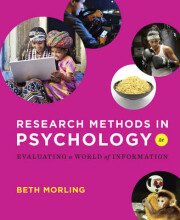Reasoning about causality
33 important questions on Reasoning about causality
How do we call a study in which people are allocated at random (by chance alone) to receive one of several clinical interventions?
What are the two benefits of using randomization?
- It eliminates confounder bias
- it enables the researcher to quantify his uncertainty
How can you find a confounder?
- Try adjusting for the confounder, and try not adjusting for the confounder
- if there is a difference in results, the confounder is real and should be adjusted for.
- if there isn't any difference, use the non-adjusted results.
- Higher grades + faster learning
- Never study anything twice
- 100% sure, 100% understanding
What is the definition of a confound?
When should a confounder be controlled for?
In a relationship diagram, what is a backdoor?
How do you close a back- or front door route in a relationship diagram?
How do you choose which variables to control for?
- Always choose the least amount of variables.
- identify all the possible paths from x to y
- choose the variables that cause the back doors to close, while the front doors stay open.
How do we call controlling for something that your treatment causes, causing you to shut down some of the effect of your treatment on the outcome?
When is a variable a collider?
- X-->C<--Y
- C, is a collider here because in this path both arrows point towards it.
What happens when you control for a collider?
If you control a collider, how can you close the path it's on again?
What is a quasi experiment?
What are the three criteria of a causal relationship?
- X precedes Y; priority
- change in X varies systematically with change in Y; consistency
- there is no alternative explanation for the relationship.; exclusivity
Describe post hoc ergo propter hoc
- Mistake correlation for causality
- "X precedes Y, therefor X must cause Y"
Describe the inversion of cause and effect.
- Mistake covarying with causality
- "X causes Y, therefor the absence of X causes the absence of Y"
What does it mean when we talk about an inus condition instead of a single cause?
Apply the inus condition on a match as a cause for a fire.
- Insufficient: a match cant start a fire on it's own, it needs oxygen etc.
- non-redundant (niet overbodig): relevant part of the situation
- unnecessary: there are other tools to start a fire with
- sufficient condition: together with friction, oxygen and fuel it will start a fire.
What is a counterfactual?
How can counterfactuals be used to check for non-redundancy?
- Compare the counterfactual to what actually happened
- the difference between the situations can be attributed as an effect of the manipulation so we know if its non-redundant.
What are ways to cut the paths between causes and different confounds (backdoors)
What are the threats of causality?
- History: unplanned events unrelated to the intervention that might impact the outcome
- maturation: natural changes that may be confused with treatment effect.
- selection: biased assignment to groups
- attrition: systematic correlated with condition participant dropping
- instrumentation: changes in scoring rubric or instrument caliber such as rater fatigue
- testing: the effect of taking a pre test on the outcome of the study (familiarity with questions etc.)
How do you determine what the counterfactual should be?
Put the following in a DAG: the effect of X on Y is mediated by Z.
Put the following in a DAG: X and Y have a common effect Z
Put the following in a DAG: X and Y have a common cause Z
How do we call the idea that the more controlled variables are included in the model, the more accurate the estimation of the causal effect is?
Which two problems come from the erroneous purification principle?
- Problem of overcorrection
- collider bias
How do we call it when controlling for common effects will bias the estimation of a causal relationship between two variables.
How do we call it when controlling for mediators on the causal path could lead to an underestimation of the total causal effect?
Why is it important to control for a common cause?
Describe Berkson's paradox
when two diseases in a hospital are correlated this is because you're already in a hospital. So when you don't have one disease the chances are higher that you have the other disease because you are already sick.
when you also look at people outside the hospital, the correlation is not found.
How can a correlation between attractiveness and character be found in an individual's dates be explained by berkson's paradox.
if the person is ugly and not nice you wouldn't go out in the first place.
so if you're date is ugly chances increase that he's very nice.
The question on the page originate from the summary of the following study material:
- A unique study and practice tool
- Never study anything twice again
- Get the grades you hope for
- 100% sure, 100% understanding
































